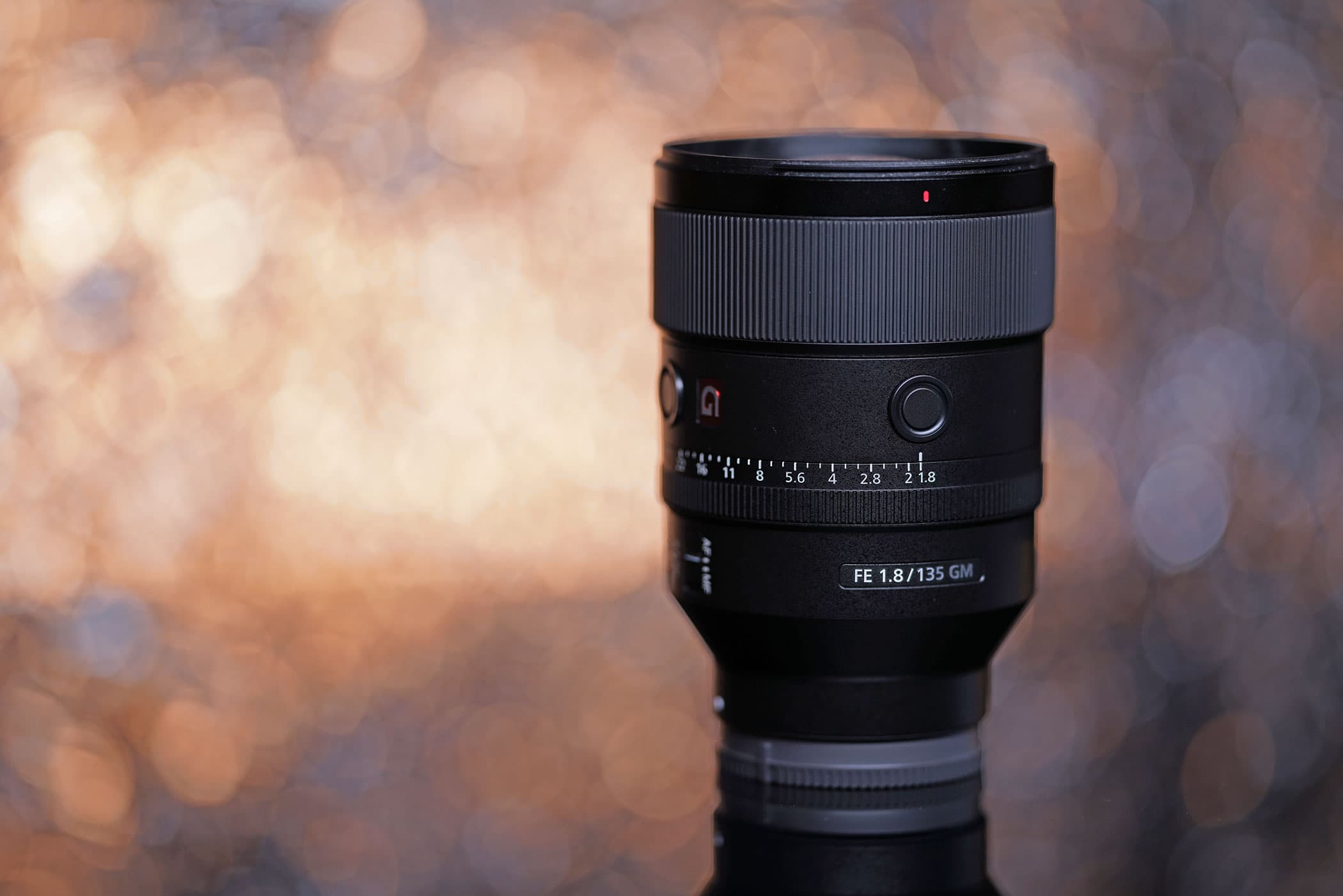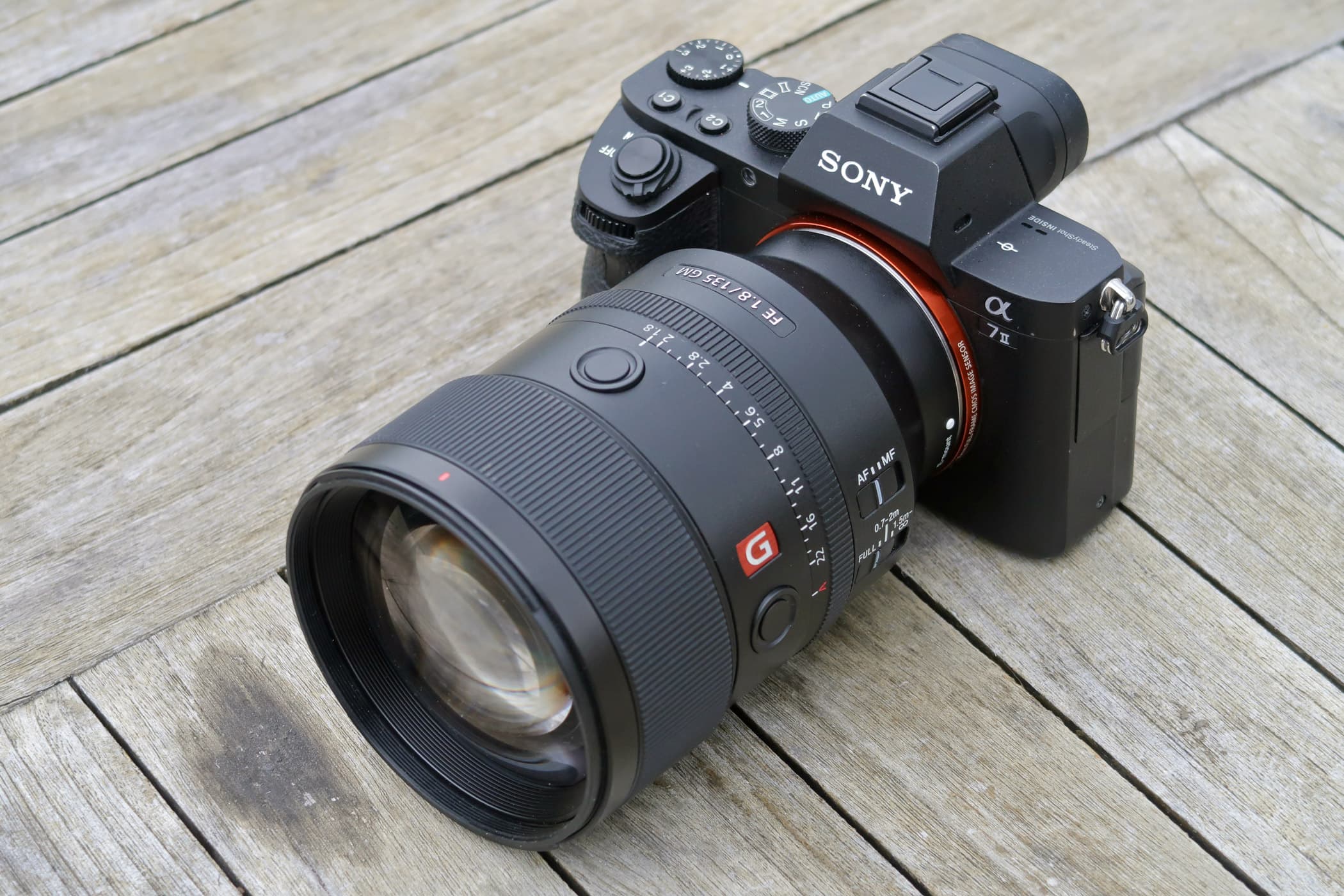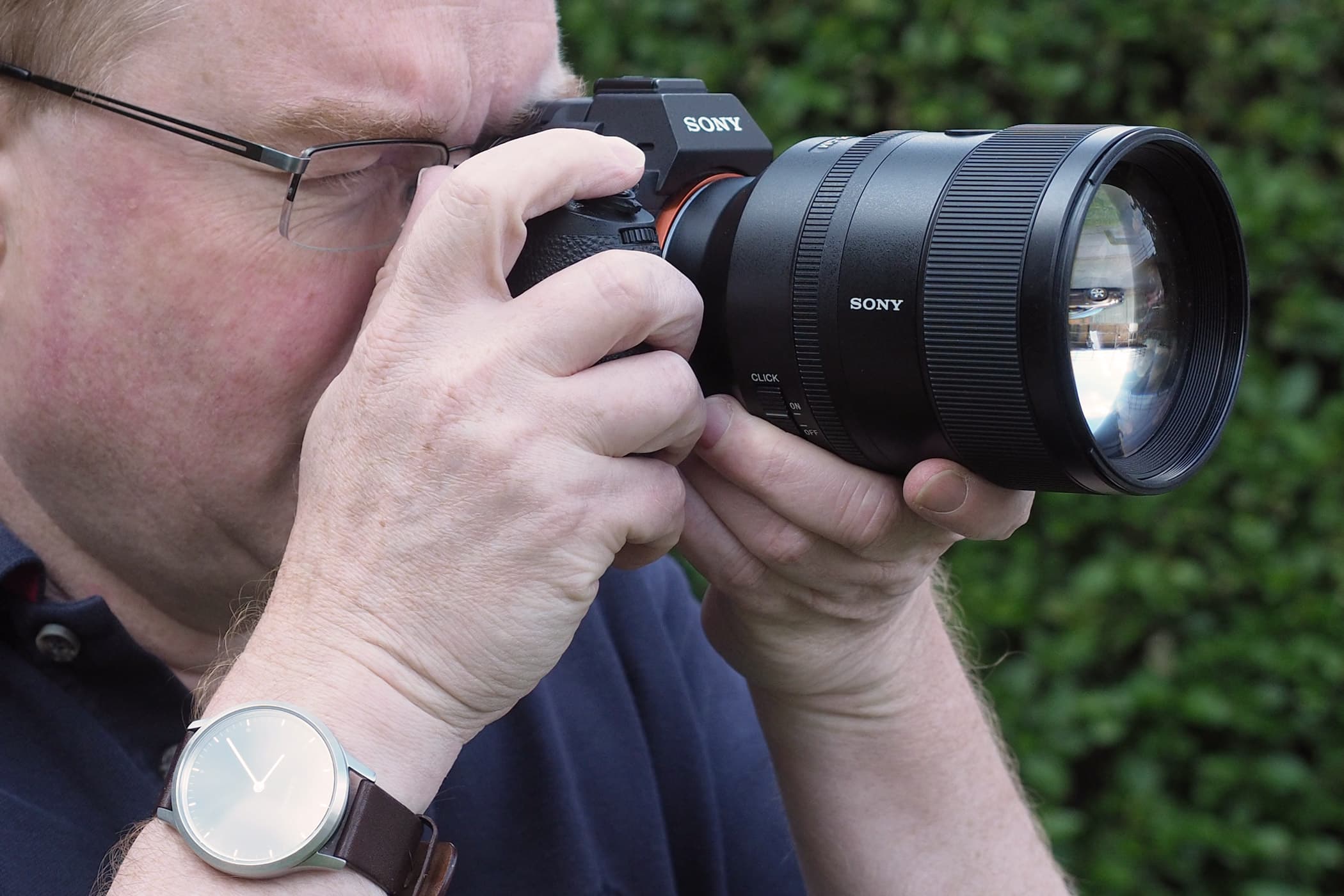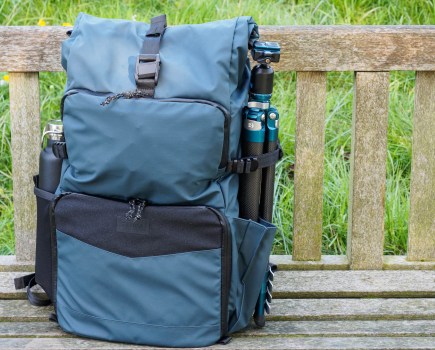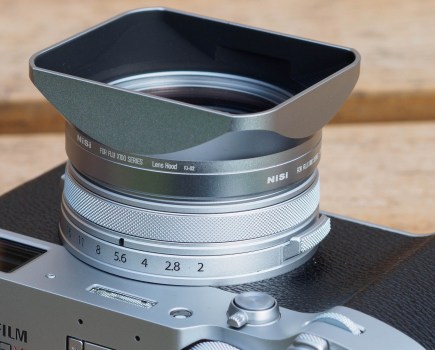The market has almost fully moved to mirrorless in recent years, with full-frame dominating the narrative around new cameras and lenses. But while Canon, Nikon and Panasonic have all jumped in on the act, Sony’s five-year head-start means that its lens line-up is vastly more developed than its competitors. Because of this, while the likes of Canon and Nikon are trying to fill out their RF and Nikkor Z lens ranges, respectively, Sony has the luxury of filling out its FE range with the kind of fast primes that are appreciated by serious photographers. The FE 135mm F1.8 GM, a short-telephoto lens at a classic focal length for head-and-shoulders portraits, arrived on the scene in early 2019 with a host of intriguing features. We put it through its paces for this in-depth Sony FE 135mm F1.8 GM review.
For more information and options, check out our guides to the:
As a member of Sony’s premium G Master range, this 135mm optic isn’t your typical portrait lens. With a focal length longer than 85mm, what it does is enable you to stand far back from your subject and render a flattering perspective. And with that f/1.8 maximum aperture, you can heavily blur your background to focus attention on your subject.
Given its eye-watering $2,098 / £1,599 price tag, Sony users will be fully expecting it to deliver on this promise of sharpness and exquisite bokeh. In context, this is £600 more the stunning Sigma 135mm f/1.8 DG HSM | Art, which costs $1,399 / £1,099 in its native E-mount incarnation. It’s also more expensive the Zeiss Batis 135mm f/2.8 ($1,750 /£1,100), which may have a slower maximum aperture, but is still capable of producing absolutely beautiful images, while being considerably lighter and including optical stabilisation. At the other end of the scale, the Samyang AF 135mm f/1.8 FE costs $819 / £798, while those prepared to live with manual focus could pick up a Samyang 135mm f/2 ED UMC for just $499 / £459. So why pay extra for the Sony lens?
Sony FE 135mm F1.8 GM: Features
One argument in favour of the G Master lens is that it’s the most fully featured of these 135mm primes. It’s built around a brand-new optical formula with 13 elements in 10 groups, including one element made from extra-low dispersion (ED) glass, one from super ED glass and one Advanced Aspherical (AA) element to minimise chromatic aberration and distortion. Nano AR coating suppresses flare and ghosting, while flourine coating on the front element is designed to repel water and grease. An 11-blade diaphragm maintains a circular aperture for attractive out-of-focus blur, aided by the AA element that eliminates ‘onion ring’ bokeh.
The optics are housed within a magnesium alloy barrel that’s resistant to dust and water ingress. It features a traditional aperture ring, with click-stops at one-third EV steps, alongside an A position that passes control to the camera’s electronic dials. A large switch under the barrel de-clicks the ring for movie shooting. Filters can be attached to an 82mm thread, and a robust, rubber-tipped plastic lens hood is supplied in the box.
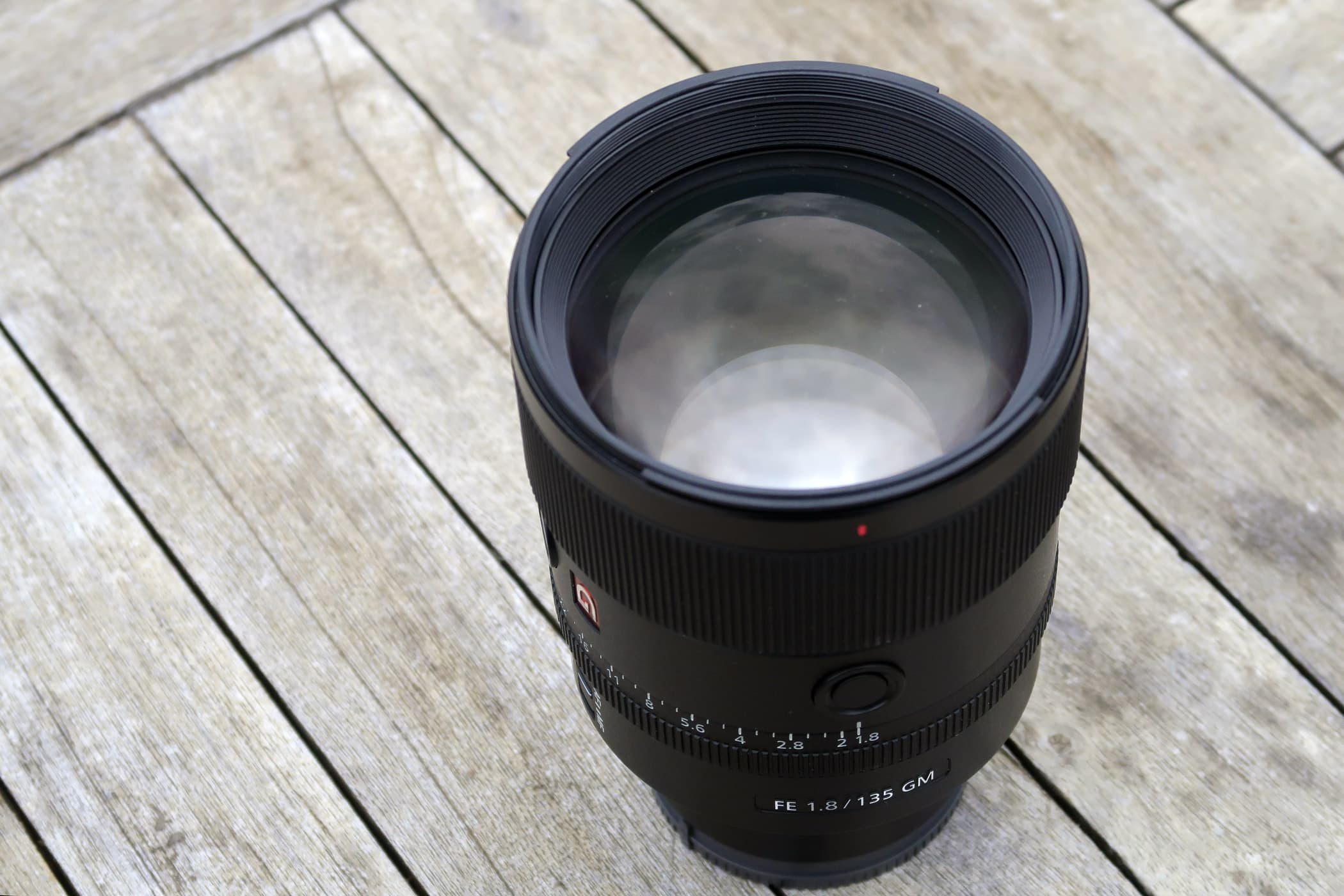
The large front element is surrounded by an 82mm filter thread and a bayonet mount for the supplied lens hood
Sony is promising fast, precise and quiet autofocus, thanks to the use of four XD Linear motors which work in pairs driving two focus groups. This enables a floating focus design to ensure high image quality across the full distance range, while minimising ‘breathing’ during movie shooting. The minimum focus is a class-leading 0.7m, which affords 0.25x magnification for close-up shooting.
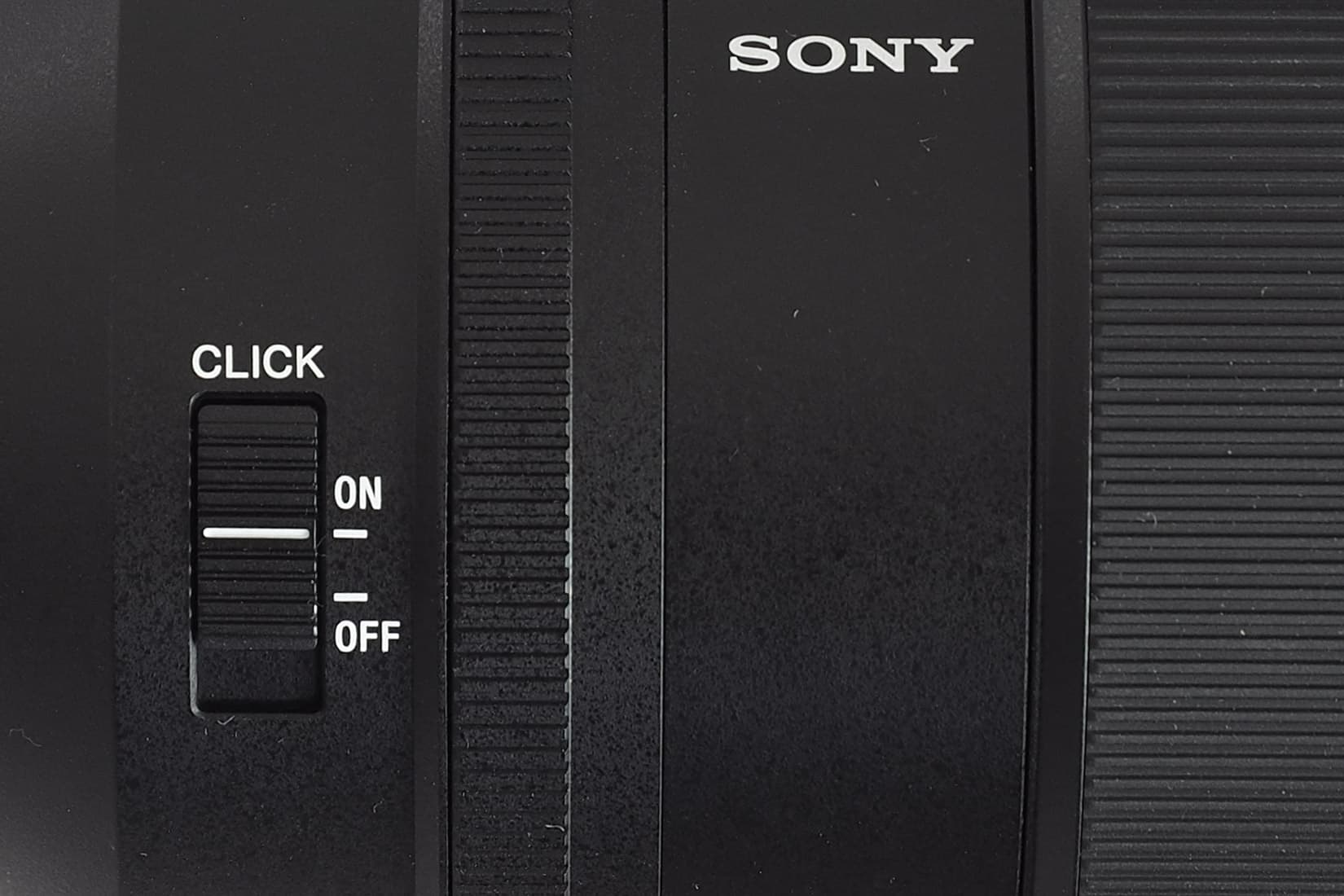
The aperture ring can be de-clicked using a large switch on the underside of the barrel
Two AF stop buttons are arranged at 90 degrees around the barrel for landscape- and portrait-format shooting. A focus limiter switch is also included, with three positions covering 1.5m to infinity, 0.7m to 2m, and the full distance range.
Sony FE 135mm F1.8 GM: Build and Handling
Sony has developed a reputation for building sizable lenses that stand in contrast to its compact Alpha 7-series bodies, and the 135mm f/1.8 is no exception. Indeed at 90mm in diameter and 127mm in length, it’s larger than the firm’s equivalent lens for its Alpha-mount DSLRs (check out our guide to the Best DSLRs). On the other hand it’s slightly shorter than Sigma’s E-mount alternative, and the Mg-alloy construction means it’s not as heavy, either. But at 950g, it’s still no lightweight.
As a result, this isn’t a lens you can just throw in a bag and carry around without noticing. It’s also, even more than usual, one that you’ll primarily hold by supporting its weight with your left hand. However it handles reasonably well on the Alpha 7-series bodies I used for testing, with the aperture ring perfectly placed for operation by your thumb and second finger. If you need to focus manually, then a slight stretch forward with your forefinger is all that’s needed to locate the focus ring.
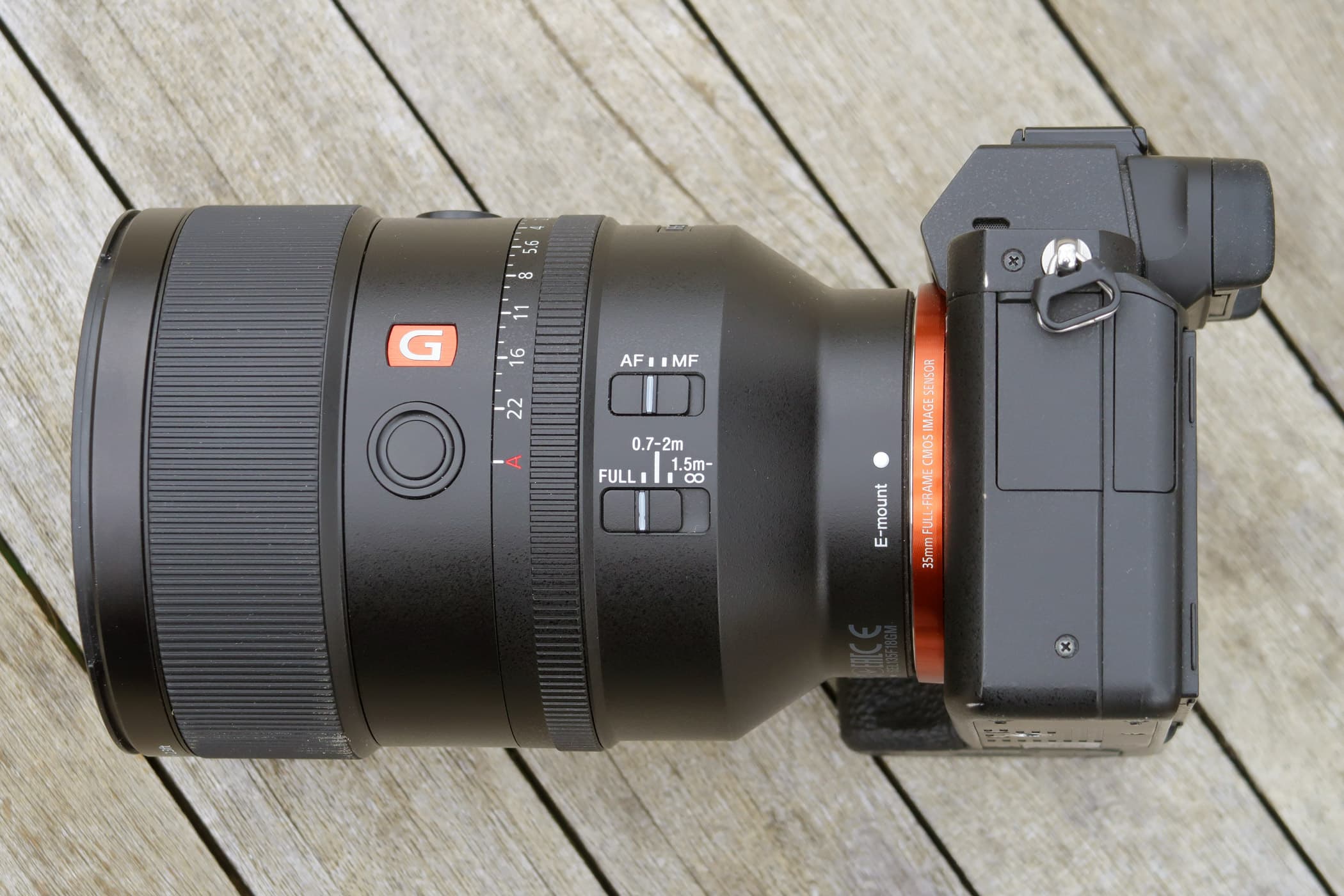
The aperture ring has well-judged click stops, but the focus mode and limiter switches are a bit too stiff, but they could loosen up with use
As with the rest of Sony’s GM range, build quality is excellent, with a robust-feeling barrel that should easily withstand everyday use. The aperture ring has a well-judged feel, with click-stops that are firm enough to stay put, but don’t require excess force to change. My only real criticism is that the focus mode and limiter switches are both a bit too stiff, with the latter being especially difficult to set to its central portrait-photography position (0.7-2m).
Sony FE 135mm F1.8 GM: Autofocus
One of the biggest advantages of mirrorless cameras over DSLRs becomes apparent when shooting with this kind of fast prime. On-sensor hybrid AF means the camera can focus quickly and perfectly accurately regardless of where your subject is in the frame, aided by Sony’s advanced technologies such as Eye AF and real-time tracking. With an SLR, in contrast, getting accurate AF with a 135mm f/1.8 prime would almost certainly require the painful process of configuring AF micro-adjustment, which still might not give consistent results, especially with off-centre focus points.

Autofocus is unerringly accurate, even with subjects placed far off-centre. Sony Alpha 7R III, Sony FE 135mm F1.8 GM, 1/160sec at f/1.8, ISO 160
Used on third-generation bodies such as the Alpha 7R III, I found the lens focused quickly, silently, and unerringly accurately. When shooting portraits, using Eye AF gave particularly impressive results. However on the older Alpha 7 II it’s not as fast, and more likely to hunt for focus in marginal light, at which point there can be value in limiting the focus range.
Alternatively, on those occasions when AF fails, flicking the switch on the side of the barrel engages manual focus. This uses a focus-by-wire system, but Sony’s Linear Response MF brings a very natural feel to the process, similar to using a traditional manual prime. If you like having full-time manual override of autofocus, simply set the camera to its Direct Manual Focus (DMF) mode.
Sony FE 135mm F1.8 GM: Performance
If you’re spending $2,098 / £1,599 on a lens, obviously it had better be good. Thankfully the FE 135mm F1.8 GM is, by any sensible measure, totally spectacular. Indeed it’s difficult to imagine how a lens could perform much better optically.

The Sony FE 135mm F1.8 GM combines stunning sharpness with gorgeous bokeh. Sony Alpha 7R III, Sony FE 135mm F1.8 GM, 1/400sec at f/1.8, ISO 100
I found that sharpness is stupendous, even at f/1.8, to the extent that for portraits you might find yourself wishing for a touch of flattering softness instead. Engage Eye AF and you’ll find every eyelash rendered with exquisite definition. The zone of sharp focus fades away beautifully to defocused blur, with almost no perceptible colour fringing to spoil the effect. Out-of-focus areas are rendered with a lovely smoothness – this lens really is a bokeh master. The lens is just as well-behaved at all focus distances, from infinity to close-ups.
Technically there is, perhaps, a tiny amount of pincushion distortion, but you’d really have to go out of your way to see it. Flare resistance is extremely impressive, with the lens completely unfazed by shooting directly into the light. Thankfully, though, there is at least some vignetting wide open, to help frame your subject and provide the characteristic fast-prime aesthetic.
Sony FE 135mm F1.8 GM: Resolution
Even a cursory glance at our Image Engineering MTF tests, measured on the 42.4MP Alpha 7R III, reveals that this lens is something well above the ordinary. It’s not just the central resolution that’s breathtaking, but also how close the corners come to matching it. This remarkable sharpness also means that you can happily use the lens at smaller apertures than you might expect, as there are so few optical aberrations to compound the effect of diffraction blurring.
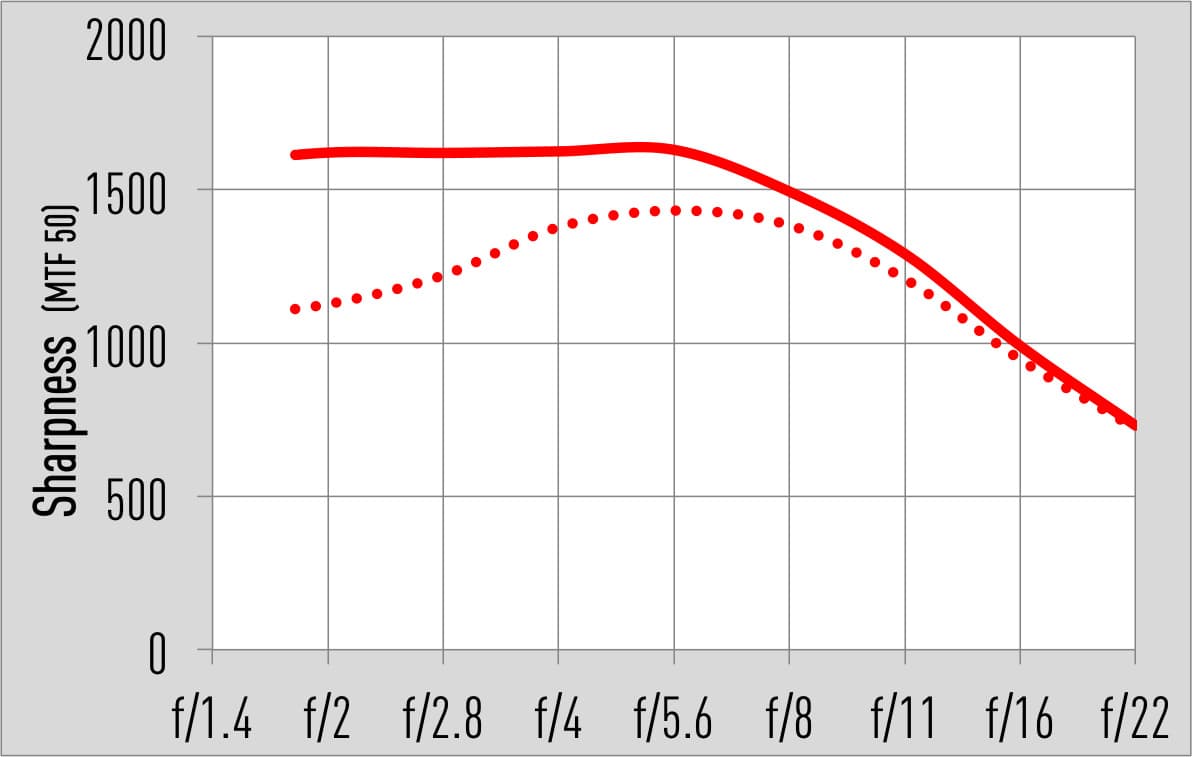
Sony FE 135mm F1.8 GM – MTF50 measured on Sony Alpha 7R III
Sony FE 135mm F1.8 GM: Shading
With the aperture set wide open, around a stop of vignetting is visible, much as we’d expect from any fast prime. But the gradual fall-off profile means that it’s not visually objectionable, indeed it will usually enhance your images rather than spoil them. The vignetting effect pretty much disappears on stopping down to f/2.8.
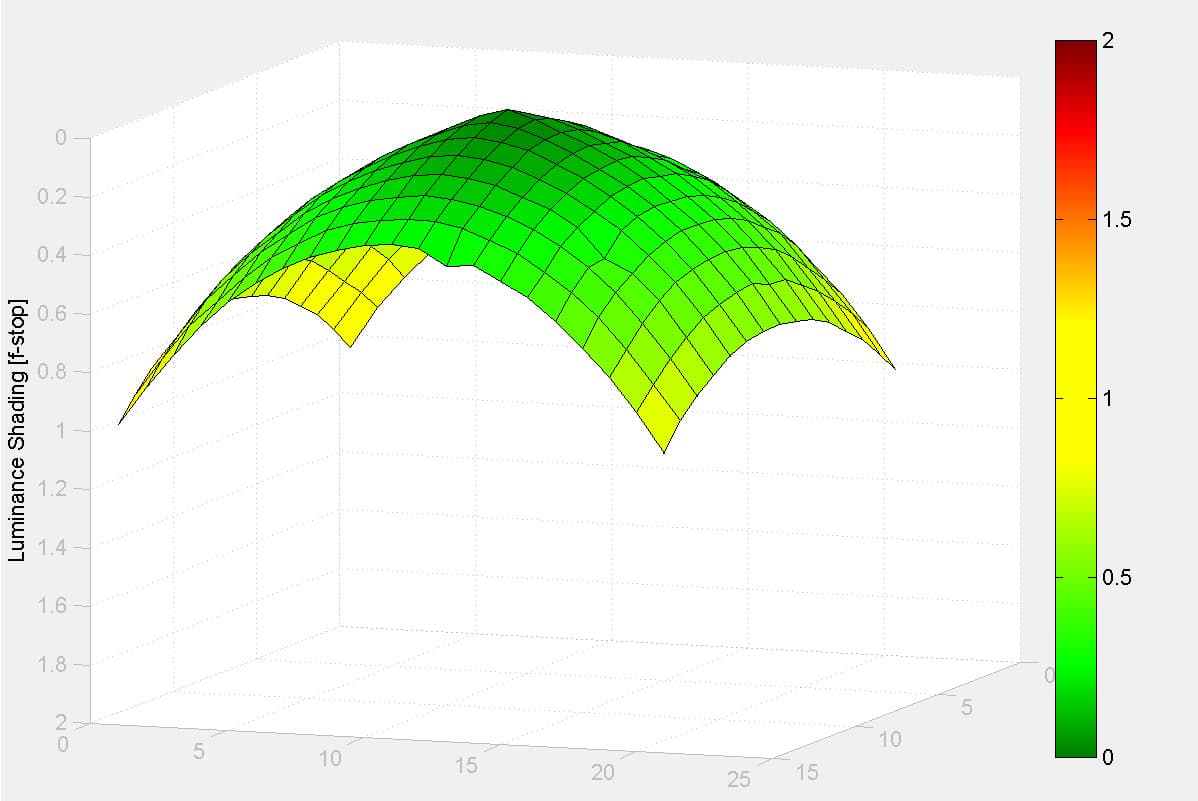
Sony FE 135mm F1.8 GM: Shading at f/1.8
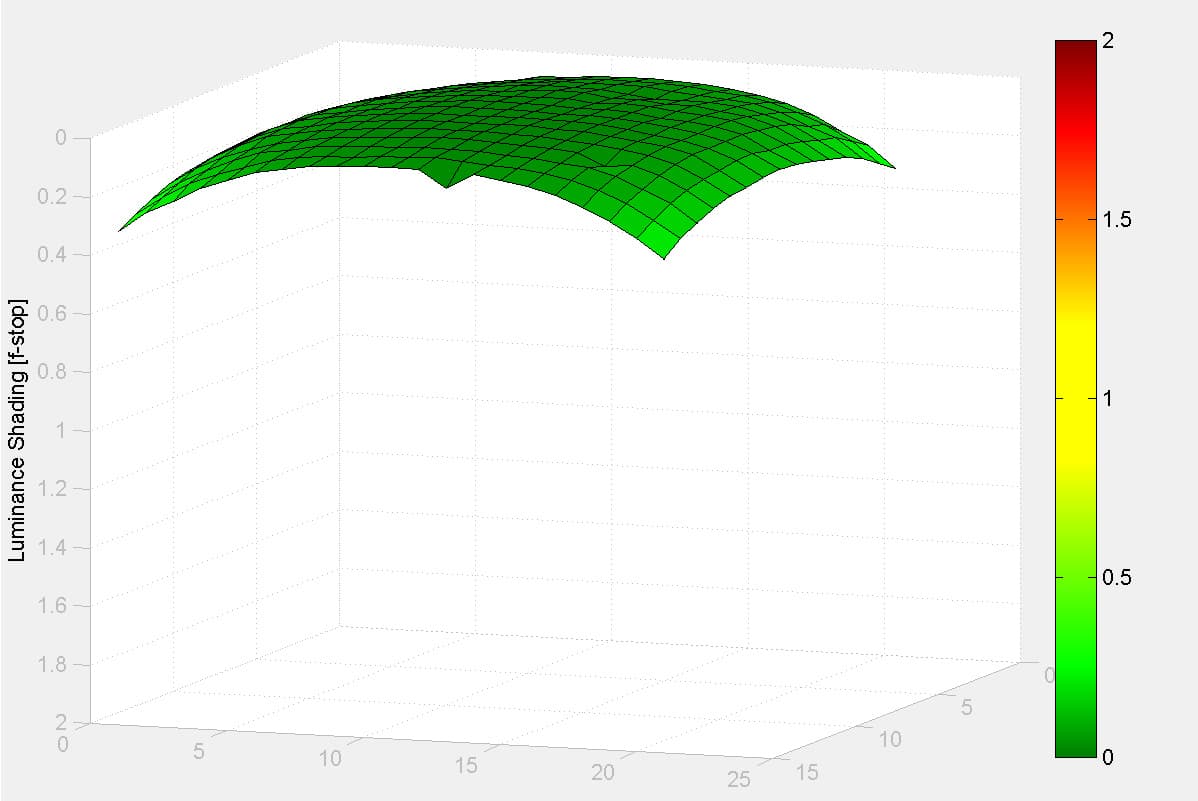
Sony FE 135mm F1.8 GM: Shading at f/2.8
Sony FE 135mm F1.8 GM: Curvilinear distortion
Looking really closely at our test chart shots, it’s just about possible to make out a hint of pincushion distortion. But it’s so mild that you’ll probably never see it in practical use. It’s also easy to correct in raw processing, while engaging distortion compensation in the camera’s menu eliminates it from the JPEGs.

Sony FE 135mm F1.8 GM distortion: SMIA Tv = 0.6%
Sony FE 135mm F1.8 GM: Verdict
I’ve reviewed a lot of Sony’s premium lenses over the past couple of years, and the firm continues to impress with its ability to make near-perfect optics. In this Sony FE 135mm F1.8 GM review, I found that the new lens continues this run of form, with its combination of supreme sharpness and gorgeous bokeh likely to appeal strongly to portrait and wedding photographers. I can’t imagine anyone being disappointed by the images it produces. Compared to 85mm alternatives, it’ll give a more flattering perspective and greater background blur.

The large aperture also allows shooting in extremely low light. Sony Alpha 7R III, Sony FE 135mm F1.8 GM, 1/160sec at f/1.8, ISO 1250
For more high-resolution images, see our Sony FE 135mm F1.8 GM sample image gallery
The complicating factor, though, is that its Sigma and Zeiss rivals are capable of producing equally fine images at a significantly lower price. So ultimately you’re paying a hefty premium for such desirable touches such as a physical aperture ring, and the confidence of perfect compatibility with Sony cameras for both stills and video shooting. But if you want the very best short-telephoto portrait lens available for Sony full-frame mirrorless, this is surely it.



